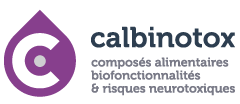

Maître de Conférences
Faculté des Sciences et Technologies - Nancy
Université de Lorraine
03 72 74 89 89 | Christophe.Nemos@univ-lorraine.fr
American Journal of Medical Genetics, 194 (9), e63.
Blanc, A., Bonnet, C., Wandzel, M., Roth, V., Duffourd, Y., Safraou, H., Leheup, B., Muller, F., Colne, J.D., Feillet, F., Schmitt, E., Castro, M., Savatt, J., Burcheri, A., Nemos, C., Philippe, C., Lambert, L.
The autosomal dominant Okur–Chung neurodevelopmental syndrome (OCNDS: OMIM #617062) is a rare neurodevelopmental disorder first described in 2016. Features include developmental delay (DD), intellectual disability (ID), behavioral problems, hypotonia, language deficits, congenital heart abnormalities, and non-specific dysmorphic facial features. OCNDS is caused by heterozygous pathogenic variants in CSNK2A1 (OMIM *115440; NM_177559.3). To date, 160 patients have been diagnosed worldwide. The number will likely increase due to the growing use of exome sequencing (ES) and genome sequencing (GS). Here, we describe a novel OCNDS patient carrying a CSNK2A1 variant (NM_177559.3:c.140G>A; NP_808227.1:p.Arg47Gln). Phenotypically, he presented with DD, ID, generalized hypotonia, speech delay, short stature, microcephaly, and dysmorphic features such as low-set ears, hypertelorism, thin upper lip, and a round face. The patient showed several signs not yet described that may extend the phenotypic spectrum of OCNDS. These include prenatal bilateral clubfeet, exotropia, and peg lateral incisors. However, unlike the majority of descriptions, he did not present sleep disturbance, seizures or gait difficulties. A literature review shows phenotypic heterogeneity for OCNDS, whether these patients have the same variant or not. This case report is an opportunity to refine the phenotype of this syndrome and raise the question of the genotype–phenotype correlation.
Molecular Neurobiology, 56 (2), pp. 892-906.
Willekens, J., Hergalant, S., Pourié, G., Marin, F., Alberto, J.-M., Georges, L., Paoli, J., Nemos, C., Daval, J.-L., Guéant, J.-L., Leininger-Muller, B., Dreumont, N.
Gestational methyl donor (especially B9 and B12 vitamins) deficiency is involved in birth defects and brain development retardation. The underlying molecular mechanisms that are dysregulated still remain poorly understood, in particular in the cerebellum. As evidenced from previous data, females are more affected than males. In this study, we therefore took advantage of a validated rat nutritional model and performed a microarray analysis on female progeny cerebellum, in order to identify which genes and molecular pathways were disrupted in response to methyl donor deficiency. We found that cerebellum development is altered in female pups, with a decrease of the granular cell layer thickness at postnatal day 21. Furthermore, we investigated the involvement of the Wnt signaling pathway, a major molecular pathway involved in neuronal development and later on in synaptic assembly and neurotransmission processes. We found that Wnt canonical pathway was disrupted following early methyl donor deficiency and that neuronal targets were selectively enriched in the downregulated genes. These results could explain the structural brain defects previously observed and highlighted new genes and a new molecular pathway affected by nutritional methyl donor deprivation.
Brain, Behavior, and Immunity, 63, pp. 137-147.
Soualeh, N., Dridi, I., Eppe, G., Nemos, C., Soulimani, R., Bouayed, J.
Several lines of evidence indicate that early-life inflammation may predispose to mental illness, including depression, in later-life. We investigated the impact of perinatal exposure to polluted eels on neonatal, postnatal, and adult brain inflammation, and on the resignation behavior of male and female adult offspring mice. The effects of maternal standard diet (laboratory food) were compared to the same diet enriched with low, intermediate, or highly polluted eels. Brain inflammatory markers including cytokines were assessed in offspring mice on the day of birth (i.e., on the postnatal day–PND 1), upon weaning (PND 21) and at adulthood (PND 100). Plasma myeloperoxidase and corticosterone levels were evaluated at PND 100. Immobility behavior of offspring was assessed in adulthood (i.e., at PNDs 95–100), using the tail suspension and forced swimming tests. Chronic brain inflammation was found in male and female offspring mice compared to controls, as assessed at PNDs 1, 21, and 100. The level of myeloperoxidase was found to be significantly higher in both adult males and females vs. control offspring. However, high corticosterone levels were only found in male offspring mice that were perinatally exposed to eels, suggesting a gender-selective dysregulation of the adult hypothalamic-pituitaryadrenal (HPA) axis. Gender-specific differences were also detected in adulthood in regard to offspring resignation behavior. Thus, compared to controls, males, but not females, whose mothers were fed eels during pregnancy and lactation exhibited a depressive-like behavior in adult age in both behavioral models of depression. Depressive symptoms were more pronounced in male mice perinatally exposed to either intermediate or highly polluted eels than those exposed to only lowly polluted eels. Our results indicate that early-life inflammatory insult is a plausible causative factor that induces the depressive phenotype exhibited by male adult offspring mice, most likely through a gender-specific HPA axis enhanced activation.
Toxicology Letters, 245, pp. 7-14.
Ardzivian Elnar, A., Desor, F., Legay, S., Nemos, C., Yen, F.T., Oster, T., Bohn, T., Soulimani, R.
The developing central nervous system is particularly vulnerable to environmental contaminants such as non-dioxin-like polychlorinated biphenyls (NDL-PCBs). This study investigated the potential oxidative effects in mice pups exposed via lactation to the sum of the six indicator NDL-PCBs (∑6 NDL-PCBs) at 0, 1, 10 and 100 ng/kg per 14 days, constituting levels below the guidance values fixed by French food safety agencies for humans at 10 ng/kg body weight per day. For this purpose, the oxidative status was assessed by flow cytometry via dichloro-dihydro-fluorescein diacetate in the cerebellum of juvenile male offspring mice during brain growth spurt [postnatal day (PND) 14]. No significant differences were found in the levels of reactive oxygen species in the cerebellar neurons or glial cells (astrocytes, oligodendrocytes and microglia) of lactationally exposed male mice at PND 14 (p>0.05). Concordantly, oxidative-stress related gene expression was measured by qPCR for catalase, copper zinc superoxide dismutase 1, glyoxalase 1, glutathione peroxidase 1, and glutathione reductase 1, in the cerebellum at PND 14 appeared unaffected, as also verified at the protein level by immunoblots. Moreover, transcriptomic data from our previous work have not shown differences in the mRNA expressions of genes belonging to GO terms involved in oxidative stress in neurons of male mice exposed to ∑6 NDL-PCBs compared to controls; except for glyoxalase 1 which was downregulated in neurons isolated from exposed group compared to controls. Our findings suggest that lactational exposure to NDL-PCBs at environmental relevant concentrations may not cause significant oxidative effect on juvenile cerebellum.
In "Biomedical Application of Nanoparticles", Rihn B.H., Ed., CRC Press, Boca Raton, FL, États-Unis, 328 pp.
Ferrari, L., Diab, R., Nemos, C., Safar, R., Puisney, C.
Biomedical Application of Nanoparticles explores nanoparticles, their chemical and physicals properties, and how they interact in biological systems with proteins, immune system and targeted cells. Risk assessment of nanoparticles for human is described, including: cellular paradigms, transcriptomics and toxicogenomics. Finally, the applications of nanoparticles in medicine and antioxidant regenerative therapeutics are presented in several chapters with emphasis on how nanoparticles enhance transport of drugs across biological membrane barriers and therefore may enhance drug bioavailability.
Variety of nanoparticle their synthesis and physicochemical determination. Nanoparticle world: history and introduction to their diversity. Manufacturing nanoparticles: a chemist approach. Manufacturing nanoparticles: a pharmacist approach. Methods for physico-chemical composition determination. Metrology of nanoparticles. Interaction with biological systems. Nanoparticle interaction with proteins: corona formation. Nanoparticle interaction with immune system. Cell uptake and internalization. Response of living systems to nanoparticles. Tools and methods for living system response investigation. Determination of effect biomarkers in cell, e.g. of NCF1 gene. Oxidative stress pathways involved following nanoparticle uptake. Involvement of necrosis, apoptosis or autophagy pathways. Nanoparticle and cell differentiation. Safety assessment of nanoparticle human use. Rodent inhalation studies for nanoparticles. The problem of barrier crossing: skin, placenta and brain barrier. Cell and coculture paradigms in safety assessment. Screening for genotoxicity using toxicogenomics. Nanoparticle and mitochondrion interaction. Medical use of nanoparticles. Nanoparticles and drug delivery: past present and future. Nanoparticles as vehicle of antioxidants. Nanoparticles in imaging for cancer early diagnosis. Phototherapy using drug encapsulated agents in cancer. Nanoparticle therapeutic in degenerative diseases. Nanoparticle in cosmetics. Current use of nanoparticle in the 3 Pharmacopeia.
22nd International Scientific Conference of the Lebanese Association for the Advancement of Science (LAAS), 14-15 avril, Kaslik, Liban
Karkaba, A, Peiffer, J., Ardzivian, A., Desor, F., Marchionni, S., Marin, F., Rammal, H., Nemos, C., Soulimani, R.
2nd workshop on Endocrine Disruptors Effects on Wildlife and Human Health, 21-22 janvier, Paris, France
Karkaba, A, Peiffer, J., Ardzivian, A., Desor, F., Marin, F., Rammal, H., Nemos, C., Soulimani, R.
2nd workshop on Endocrine Disruptors Effects on Wildlife and Human Health, 21-22 janvier, Paris, France
Soualeh, N., Peiffer, J., Ardzivian, A., Desor, F., Nemos, C., Soulimani, R.
4th Global Summit on Toxicology, 24-26 août, Philadelphie, États-Unis
Ardzivian, A., Desor, F., Marin, F., Soulimani, R., Nemos, C.
We have previously shown neurobiological changes and developmental/behavioral performances in mice exposed during lactation to a representative environmental mixture of the six indicator non-dioxin-like polychlorinated biphenyls (?6 NDL-PCBs) at low levels. In this study, we analyzed the global gene expression profile in cerebellar neurons isolated from male mice presenting the most significant induction of anxiety-like behavior in our previous study (10 ng/kg ?6 NDL-PCBs). Our results revealed an upregulation in the expression of genes belonging to GO terms involved with the cell cycle, DNA replication, cell cycle checkpoint, response to DNA damage stimulus, regulation of RNA biosynthetic processes, and microtubule cytoskeleton organization. Downregulated genes belonged to terms involved with the transmission of nerve impulses, projection neurons, synapse hands, cell junctions, and regulation of RNA biosynthetic processes. Using qPCR, we quantified gene expression related to DNA damage and validated the transcriptomic study, as a significant overexpression of Atm, Atr, Bard1, Brca2, Fancd2, Figf, Mycn, p53 and Rad51 was observed between groups. Finally, using immunoblots, we found significant changes in the protein expression of Atm, Brca1, p53, Kcnma1, Npy4r and Scn1a between exposed and control groups, indicating that the expression pattern of these proteins agreed with the expression pattern of their genes by qPCR, further validating our transcriptomic findings. In conclusion, our study showed that early life exposure of male mice to a low level of ?6 NDL-PCBs induced p53-dependent responses to cellular stress and a decrease in the expression of proteins involved in the generation, conduction, and transmission of electrical signals in neurons.
First International Congress: Global Environmental Contamination: Challenges For The Well-Being Of The Human Brain, 08-10 septembre, Kirchberg, Luxembourg
Ardzivian, A., Desor, F., Marin, F., Soulimani, R., Nemos, C.
First International Congress: Global Environmental Contamination: Challenges For The Well-Being Of The Human Brain, Luxembourg, Luxembourg., 08-10 septembre, LUXEMBOURG, LUXEMBOURG
Karkaba A., Peiffer, J., Ardzivian, A., Desor, F., Rammal H., Marin F., Nemos C., Soulimani, R.
4èmes Journées Scientifiques de l’ATT et 1ères Journées de la FMT “Processus Toxiques d’origine Urbaines et Environnementales, Pathologies induites”, Monastir, Tunisia., 17-19 mars, Monastir, Tunisie
Ardzivian, A., Desor, F., Marin F. , Soulimani, R., Nemos C.,
14th International Neurotoxicology Association Meeting, 9-13 Juin, Egmond aan Zee, Pays-Bas
Ardzivian Elnar, A., Desor, F., Marin, F., Soulimani, R., Nemos, C.